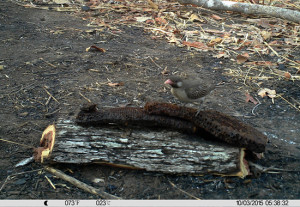Collaboration between human and wildlife is a dream we all made. Such as Cinderella, asking for help while doing her cleaning duty from her rodent friends. In a recently published paper in Science*, researchers from the University of Cambridge described a long-term collaboration between hunter-gatherers in Mozambique and the greater honeyguide (Indicator Indicator). Claire Spottiswoode and her colleagues provided solid evidence of a two-way collaborative communication between humans and a wildlife species. When Yao hunters are looking for honey, they make a specific signature call: a loud trill followed by a sort of grunt that sounds like “brr-hm”. The honeyguide birds then respond with a loud chattering sound to alert the humans of their presence before flying from tree to tree until they find a bee’ nest. Once the bee’s nest has been found, it is up to the humans to do their part of the job by cutting down trees with bee’s nests and smoking the bees out. To reward the greater honeyguides, the honey hunters leave beeswax behind them on beds of leaves. This way birds can access wax they like to consume without having to fear being stung by angry bees!
This type of collaboration was already evoked in some written accounts from the 16th century. But Spottiswoode’s team also quantified the benefits of hunting with honeyguides. They found that they were 3 times more likely to find a bee’s nest with the birds’ help. These outstanding findings lead to more questions, and the researchers are now planning to investigate how young honeyguides learn to collaborate with humans.

* C. Spottiswoode et al. Reciprocal signaling in honeyguide-human mutualism. Science. Vol. 353, July 22, 2016, p. 387. doi:10.1126/science.aaf4885.
